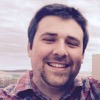Microsoft is buying LinkedIn. The eye-popping $26 billion headline number aside, does this matter? More importantly, does it matter to healthcare marketers? Yes. Yes it does.
For the past couple of years, we’ve been pounding the table that healthcare marketers need to use both social and CRM data. We’ve argued with overwhelming compelling data that a person’s history coupled with his or her social connections paints the most vivid picture of your customer.
Microsoft just put a whole lot of their money where our mouths are.
Timothy Lee who covers tech for Vox puts it perfectly. CRM is an essential software tool for any company that maintains long-term relationships with customers. Does that sound like EVERYONE we know? We all use CRM. More than that, we all rely on it to understand our customers.
Adding data from LinkedIn to Dynamics, Microsoft’s CRM platform, gives Microsoft more knowledge than just about anyone about business users—their interests and their influencers.
If we were investment analysts we could speculate about Salesforce.com buying Twitter. Or every company starting their own social network. We’re not in finance. We’re in healthcare.
So, instead of figuring out which companies pair well, we’ll offer ways you can play in this new social-CRM era.
Pharma is Fully Embracing Social
In case you don’t have the data handy, here you go. Three years ago, social was nothing. The following year, it nearly doubled as KOLs took to it. Pharma jumped in with both feet in 2015. They flooded the Twitter-verse, accounting for a big percentage of impressions and another nearly 2x jump in size. This year, social is looking like every other channel. A diverse mix of publishing, brand, KOL, and patient advocates use social media to voice their opinions and messages.
Linking Social to Other Channels Makes Both Better
Social is more than just likes, followers, and retweets. Linking social connections to known data from other channels makes both better. Knowing @Someone’s NPI number means you can track followers to script lift. Data drives every other channel. Brands need to link social data back to other sources to put it in context. Those tools exist now. Many more are emerging.
As a Brand—What Do I Do?
This is the $26 billion question. Sadly, most of us don’t have that kind of scratch. Healthcare practitioners (HCPs) don’t need another social network. They have one—in some cases more than one—of choice. Give them reasons to connect their favorite one(s) to your content. Make sure your websites, apps, and other media leverage the communities they have already built. We do it all the time. Usage is strong. The value to your customer is huge. The value for you is even huge-r. It’s a classic win-win.







